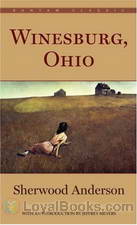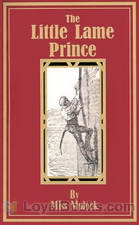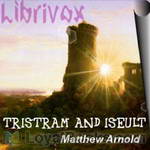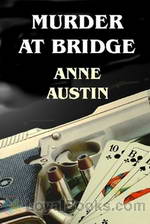|
Books Should Be Free Loyal Books Free Public Domain Audiobooks & eBook Downloads |
|
|
Books Should Be Free Loyal Books Free Public Domain Audiobooks & eBook Downloads |
|
Top Authors |
|---|
|
Book type:
Sort by:
|
By: Ella Wheeler Wilcox (1850-1919) | |
|---|---|
 Poems of Power
Poems of Power
This is a volume in a series of books of poetry by Ella Wheeler Wilcox. This time, the theme is "Power". | |
 Poems of Sentiment
Poems of Sentiment
This is a volume of poems by Ella Wheeler Wilcox. This time, the topic is "Sentiment". | |
 Kingdom of Love
Kingdom of Love
This is a volume of poetry by Ella Wheeler Wilcox, named after the poem 'the Kingdom of Love'. | |
 Age of the Motored Things
Age of the Motored Things
LibriVox volunteers bring you 13 recordings of The Age of the Motored Things by Ella Wheeler Wilcox.This was the Fortnightly Poetry project for October 6, 2013.Ella Wheeler Wilcox was an American author and poet. Her best-known work was Poems of Passion. Her most enduring work was " Solitude", which contains the lines: "Laugh, and the world laughs with you; Weep, and you weep alone". Her autobiography, The Worlds and I, was published in 1918, a year before her death.A popular poet rather than a literary poet, in her poems she expresses sentiments of cheer and optimism in plainly written, rhyming verse... | |
 True Culture
True Culture
14 recordings of True Culture by Ella Wheeler Wilcox. This was the Weekly Poetry project for December 16, 2012. Ella Wheeler Wilcox was an American author and poet. Her best-known work was Poems of Passion. Her most enduring work was "Solitude", which contains the lines: "Laugh, and the world laughs with you; Weep, and you weep alone". Her autobiography, The Worlds and I, was published in 1918, a year before her death. ( | |
 Poems of Experience
Poems of Experience
This is another volume of Ella Wheeler Wicox's famous series. This time, the topic is Experience. The short play The New Hawaiian Girl is included in this volume. | |
 Cuisine
Cuisine
Ella Wheeler Wilcox was an American author and poet, who was considered a popular poet rather than a literary poet, in her poems she expresses sentiments of cheer and optimism in plainly written, rhyming verse. Her world view is expressed in the title of her poem "Whatever Is—Is Best", suggesting an echo of Alexander Pope's "Whatever is, is right." None of Wilcox's works were included by F. O. Matthiessen in The Oxford Book of American Verse, but Hazel Felleman chose no fewer than fourteen of her poems for Best Loved Poems of the American People, while Martin Gardner selected "The Way Of The World" and "The Winds of Fate" for Best Remembered Poems... | |
By: Sherwood Anderson (1876-1941) | |
|---|---|
 Winesburg, Ohio
Winesburg, Ohio
Anderson’s uniquely structured piece focuses on the lives of Winesburg’s most intriguing residents, as each shares a personal recount of their lives and experiences in the small town. The stories essentially intertwine to illustrate the development of George Willard, as he transforms from a heedless young man, to a man well aware of life’s trials and the extent of human misery. Exploring various themes including isolation, communication, limitation, and suffering, Winesburg, Ohio offers a glimpse into its characters heartfelt confessions... | |
By: Miss Mulock (1826-1887) | |
|---|---|
 The Little Lame Prince
The Little Lame Prince
Paralyzed in an accident while a baby, young Prince Dolor is imprisoned in a lonely tower by his usurping uncle. He is visited by his mysterious godmother who provides him with magical gifts, including a traveling cloak that allows him to fly across the land. He uses his gifts to return to his rightful place on the throne. Also included are several short stories by the author also featuring princes. (Chapters 12-15) | |
 Adventures of a Brownie as Told to My Child
Adventures of a Brownie as Told to My Child
Adventures of a Brownie follows the life of a brownie who lives in a family’s coal cellar and the adventures he gets into with the members of the household. (Written by Ancilla) | |
By: Algernon Blackwood (1869-1951) | |
|---|---|
 The Willows
The Willows
A tale of horror in which a pleasant sojourn down the Danube tumbles terrifyingly awry as the veil between this world and an unfathomably weird dimension is inadvertently pierced by an innocent pair of vacationers, “The Willows”, arguably Algernon Blackwood’s seminal contribution to supernatural literature, has had a lasting influence on the field. No less a personage than H. P. Lovecraft describing it as “…the greatest weird tale ever written.” A reading will reveal a clear influence to one familiar with Lovecraft’s work... | |
 The Camp of the Dog
The Camp of the Dog
A party of campers on a deserted Baltic island is terrorized by a huge wolf… or is it? | |
 Jimbo
Jimbo
A supernatural fantasy about the mystical adventures of a lonely English boy named Jimbo–who can fly! It’s really quite beautiful and can be enjoyed by adults and teenagers alike. Be warned, however: The death of a beloved character and a creepy old house haunted by the wraith-like spirits of children makes some of this story far too scary for younger kids or indeed anyone of a sensitive disposition. Algernon Blackwood (1869-1951) was born in south London and wrote many tales of the supernatural. | |
 The Wendigo
The Wendigo
Another camper tale, this time set in the Canadian wilderness. A hunting party separates to track moose, and one member is abducted by the Wendigo of legend. Robert Aickman regarded this as "one of the (possibly) six great masterpieces in the field". | |
 The Man Whom the Trees Loved
The Man Whom the Trees Loved
The story of a man’s deep connection with nature and his wife’s fear of it. | |
 Four Weird Tales
Four Weird Tales
Four stories: The Insanity of Jones, The Man Who Found Out, The Glamour of the Snow, and Sand. Tales by one the greatest practitioners of supernatural literature. Reincarnation, the Occult, and mystery. | |
 John Silence
John Silence
Six stories about Dr. John Silence if you want the shivers to run up your back, this is the right place to be | |
By: L. A. Abbott (1813-??) | |
|---|---|
 Seven Wives and Seven Prisons
Seven Wives and Seven Prisons
This work the author claims is indeed a true story of how he happened to be married seven times to seven different women and the rollicking, hilarious events that led (or stumbled) to the marriages and the ah–disassembling/failing/failures of each said marriage which happened oftentimes to land him in prison. The summarist finds the work a very tongue-in-cheek diatribe/lament/account of his obsessive zeal in ‘marrying the right one’, but is also the mirthful chronicle of said author’s very unconventional adventures. | |
By: Matthew Arnold | |
|---|---|
 Balder Dead
Balder Dead
“Balder Dead” is a beautiful epic poem by Matthew Arnold. It draws from Norse mythology to retell the story of the the death of Odin’s son, Balder, instigated by the treacherous jealousy of Loki. | |
 Tristram and Iseult & Sohrab and Rustum
Tristram and Iseult & Sohrab and Rustum
Tristram & Iseult is a narrative poem containing strong romantic and tragic themes: and was first published in 1852 by Matthew Arnold. This poem draws upon the Tristram and Iseult legends: which were popular with contemporary readers.The poem opens with Tristram upon his deathbed. The monologue of the dying man is shot through with sharp pangs of regret: centering upon his induced passion for Iseult of Ireland - inflamed by his unwittingly imbibing an irresistible love-potion.Before his decease, Tristram's lawful wife - Iseult of Ireland - arrives in time to share his deathbed... | |
 Sohrab and Rustum: An Episode
Sohrab and Rustum: An Episode
A young soldier born among Tartars but sired by the mighty Persian lord Rustum, serves in the Tartar army, seeking his great father. To this end, he persuades his general to call a truce and arrange for him to challenge the Persians to single combat. Should he prevail, his father will learn his whereabouts and come to him, or so he thinks, for Sohrab is unaware that his mother, fearing to lose her son, wrote to Rustum that their child was a girl. The Persians agree but have no champion until it is learned that they have recently been joined by Rustum... | |
 Culture and Anarchy
Culture and Anarchy
Culture and Anarchy is a series of periodical essays by Matthew Arnold, first published in Cornhill Magazine 1867-68 and collected as a book in 1869. The preface was added in 1875. Arnold's famous piece of writing on culture established his High Victorian cultural agenda which remained dominant in debate from the 1860s until the 1950s. According to his view advanced in the book, "Culture [...] is a study of perfection". He further wrote that: "[Culture] seeks to do away with classes; to make the best that has been thought and known in the world current everywhere; to make all men live in an atmosphere of sweetness and light [... | |
By: Anne Austin (1895-??) | |
|---|---|
 Murder at Bridge
Murder at Bridge
Set in the affluent town of Hamilton, Austin’s classic presents a whodunit mystery focusing on a crime involving a young woman who has been murdered under mysterious circumstances during a game of Bridge, with no hard evidence pointing to the perpetrator. Accordingly, the townspeople are also affected by the mystery and they refuse to play the dummy in fear of sharing the same fate as the unfortunate victim. A gripping mystery crime novel, Murder at Bridge evokes feelings of suspense, awe, mystery and puts to the test the crime solving capabilities of the audience as they take up the role of detective... | |
By: Sir Thomas Malory | |
|---|---|
 Le Morte d'Arthur
Le Morte d'Arthur
Le Morte d’Arthur (spelled Le Morte Darthur in the first printing and also in some modern editions, Middle French for la mort d’Arthur, “the death of Arthur”) is Sir Thomas Malory’s compilation of some French and English Arthurian romances. The book contains some of Malory’s own original material (the Gareth story) and retells the older stories in light of Malory’s own views and interpretations. First published in 1485 by William Caxton, Le Morte d’Arthur is perhaps the best-known work of English-language Arthurian literature today. Many modern Arthurian writers have used Malory as their source, including T. H. White for his popular The Once and Future King. | |
By: Alfred Binet (1857-1911) | |
|---|---|
 The Mind and the Brain
The Mind and the Brain
Today, almost every layperson understands the concept of intelligence tests and can glibly discuss IQ scores. In fact, these have become so common in the popular imagination that magazines, websites and pop quizzes offer to assess your intelligence at the drop of a hat! In this scenario, it's interesting to recall the very first person who proposed the concept of measurable intelligence. Alfred Binet was basically a clinical psychologist whose wide-ranging interests in learning difficulties faced by school children prompted him to undertake extensive studies in human cognition, psychology, learning and behavior... | |
By: Susan Coolidge (1835-1905) | |
|---|---|
 What Katy Did at School
What Katy Did at School
The continuing story of Katy Carr, recounting the time she spent at boarding school with her sister Clover. | |
 What Katy Did
What Katy Did
Follow the adventures of Katy Carr and her family, through good times and bad. | |
 Clover
Clover
Clover is the fourth book in the popular What Katy Did series. After Katy's wedding, the focus shifts to her little sister Clover. Their brother Phil encounters serious illness in the winter, and Dr. Carr sends him with Clover to the mountains of Colorado. Clarence Page, their naughty cousin from the other books, lives nearby. He is a rancher now with an attractive English partner, Geoff Templestowe, whom Clover falls for.Other books in the series areWhat Katy DidWhat Katy Did at SchoolWhat Katy Did NextIn the High Valley | |
 In the High Valley
In the High Valley
In the High Valley” is the fifth and last book of the popular “What Katy did” series by Susan Coolidge.The story starts out with Lionel Young and his sister, Imogen who set out for the picturesque but remote High Valley (America), leaving their hometown Devonshire (England) behind.Lionel wants to take the share in Geoffrey Templestowe’s cattle business.Imogen, owing to her prejudices against America and the American way of life, finds it hard to adjust to life over there.Clover Templestowe, now happily married and living in the High Valley, at first finds it very trying to get on with Imogen... | |
 Not Quite Eighteen
Not Quite Eighteen
Not Quite Eighteen is a delightful collection of children’s stories that range from moral to whimsical. From unfinished fairy tales and daydreams about a pony who kept shop to a lesson on presence of mind, these anecdotes will entertain as well as improve the mind. ( | |
 Little Country Girl
Little Country Girl
Candace makes the first long trip of her young life alone. Everything is new, from the ocean views, to the fashionable people she encounters; from the museum-like home, to the unfamiliar cousins. How will she adapt to the new experiences and will she overcome the homesickness she feels? Will she adapt her country ways and enter society, or be an embarrassment to her fine relations? Etiquette and style can be learned; but kindness, common sense and a loving heart are inbred. | |
 Verses
Verses
Susan Coolidge was the pen name of Sarah Chauncey Woolsey, who is best known for her What Katy Did series. This is the first of three volumes of her verse. | |